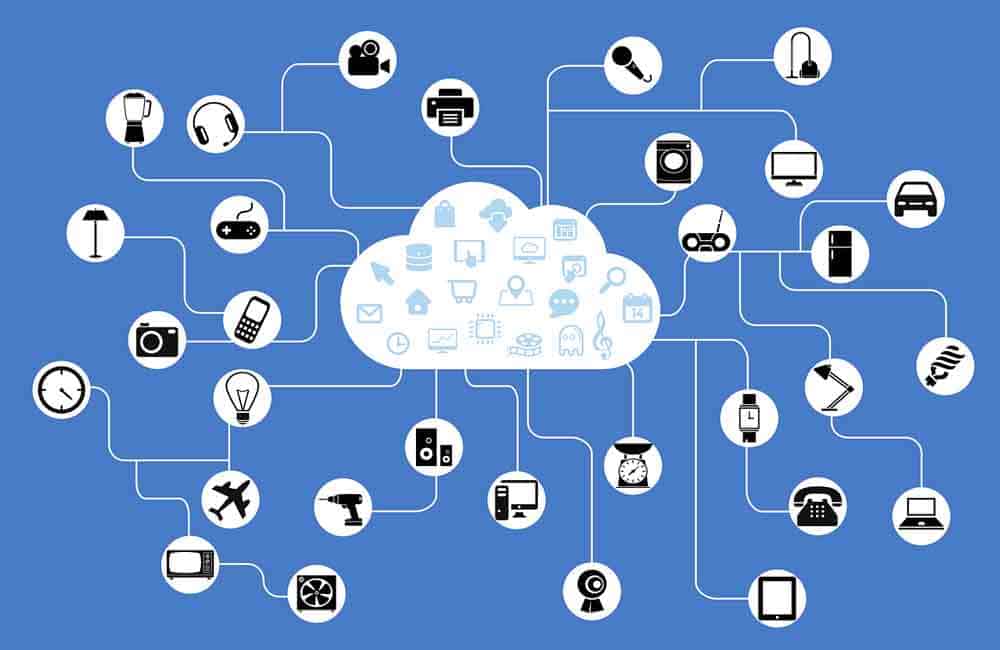What every person in business needs to know about IoT
What is IoT?
IoT stands for the Internet of Things. In the simplest terms possible, it means any device with an on/off switch can be connected to the Internet – from your home heating to vending machines to CCTV cameras. It can also apply in industrial contexts – for instance the drill of an oil rig. Technology research firm Gartner predicts that there will be over 26 billion connected devices by 2020 – “a pervasive digital presence…throughout business process and operations”.
Edward McDonnell, Director of the Centre for Applied Data Analytics Research (CeADAR), a market-focused technology centre for innovation and applied research in big data analytics, told Business & Finance, “The ‘Internet of Things’ is in its infancy. The world will become a lot more sensorised. Sensors are very cheap and reliable and the wireless infrastructure to connect them together is there. Just look at how many sensors are in your mobile phone.”
Why connect devices to the internet?
Connecting devices makes it possible to gather huge amounts of data. Given the large quantities of data gathered, this is known as big data. Why is everyone so excited about big data? It’s possible to do lots of interesting things with that data by analysing patterns, trends and associations within it – hence why the job of data scientist was termed “the sexiest job of the 21st century” by Harvard Business Review.
Analysing huge volumes of data can lead to greater efficiencies, streamlining of processes, and offer incredibly useful marketing insights. The successful combination of information, technology and strategy works to create a real business advantage.
Edward McDonnell says that the major firms understand the data-management landscape but the rest may not have the plans in place as of yet: “The big corporations understand the power of the insights that come from big data and have big data science teams. Not all industry verticals are at the same stage of data science maturity. Some sectors are behind.”
How can I make IoT work for my business?
IoT is the foundation of the modern digital business. The question is not ‘if’ IoT will work for your business, but ‘how’ it will work for your business. In order to introduce IoT innovation to your business it is essential to create a planning team within your organisation that includes not only IT executives but also people from the business and operations side. Leveraging IoT may involve disrupting processes that have gone unchanged or unquestioned for a long time, and requires buy-in from across all sectors of the business.
Damian Duffy, Head of IoT at eir Business, says he works with a lot of customers who are new to the IoT space. “Many have never deployed a machine-to-machine network before,” he says. “It’s terrifically exciting to work in at the moment as we are starting to see real business benefits for customers who are deploying these type of services within their organisations.”
The benefits offered by leveraging IoT innovation are too great to ignore: it facilitates new digital business models, gives competitive advantage, increases efficiency, streamlines processes, and can lead to better employee and customer engagement. It’s important to set out your strategic business objectives at the start of any IoT innovation project, and keep aligned to the use-case outcomes you need to see to deliver on those business objectives.
Are there security risks in an IoT network?
With billions of devices connected through IoT networks, the topic of security threats is a real issue. Security expert, Rik Ferguson, VP of Security Research at Trend Micro, warned, “There are routes in. And while things like light bulbs may be on their own mesh network, that mesh network is still connected to the rest of your corporate estate.”
Security needs to be built into the IoT network from the beginning, as the power and possibilities that it offers are increasing dramatically. Working with a trusted partner, who has deep experience in networks, and network security, is key for any business considering entering into the IoT space; building a secure IoT network is beyond the remit of many in-house IT leaders, whose work is mainly concerned with managing physical devices rather than virtual assets. Working with a trusted partner on IoT innovation projects is key to vault over the barriers to IoT success, which block a lot of businesses from entering the space or fully leveraging the possibilities. Gartner’s 2016 IoT Backbone Survey found that 32% of IT leaders cited security concerns as the main barrier they encountered preventing them from achieving IoT success.
Damian Duffy tells me that at eir Business, “We work with customers right through the process to make sure that the equipment they ultimately roll out to the field not only fulfils the real-world requirements but also complies with security constraints.”
Want to talk more about IoT and your business. Connect with Damian Duffy.

